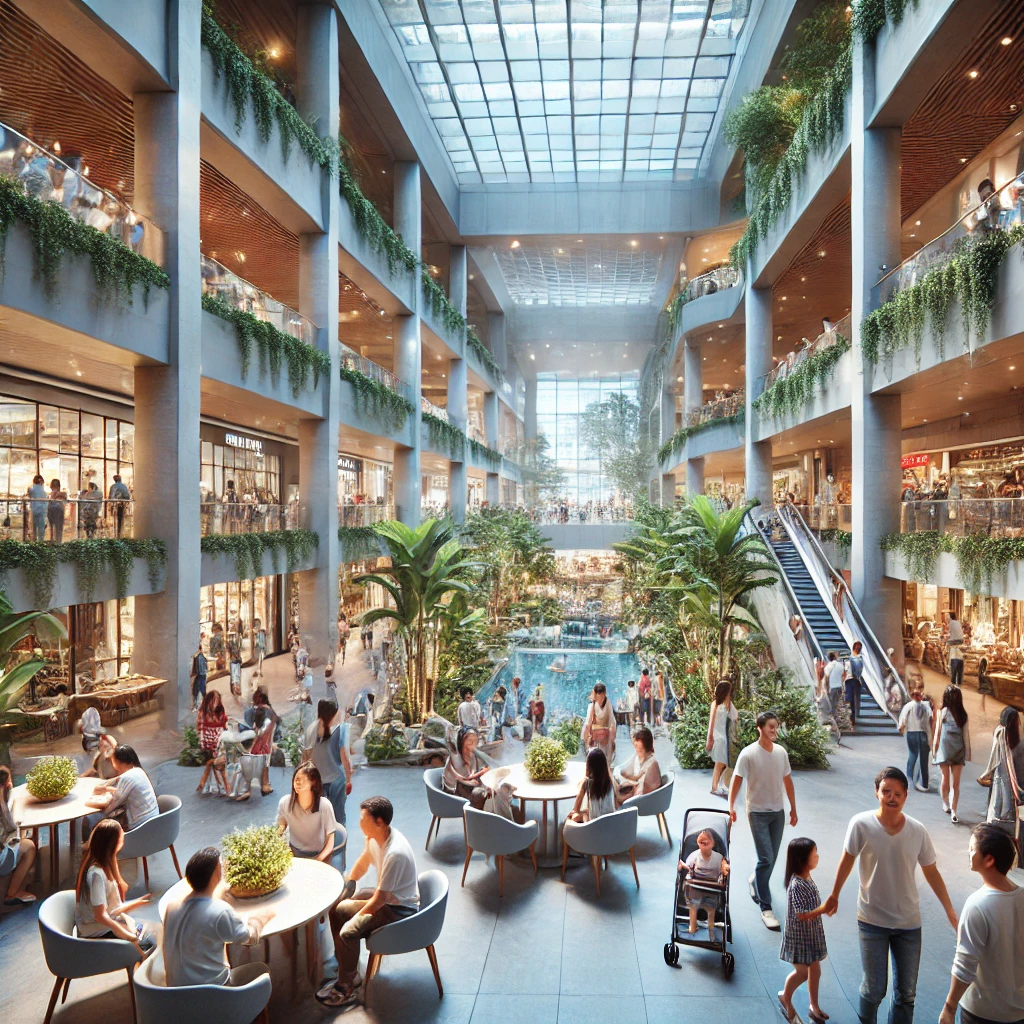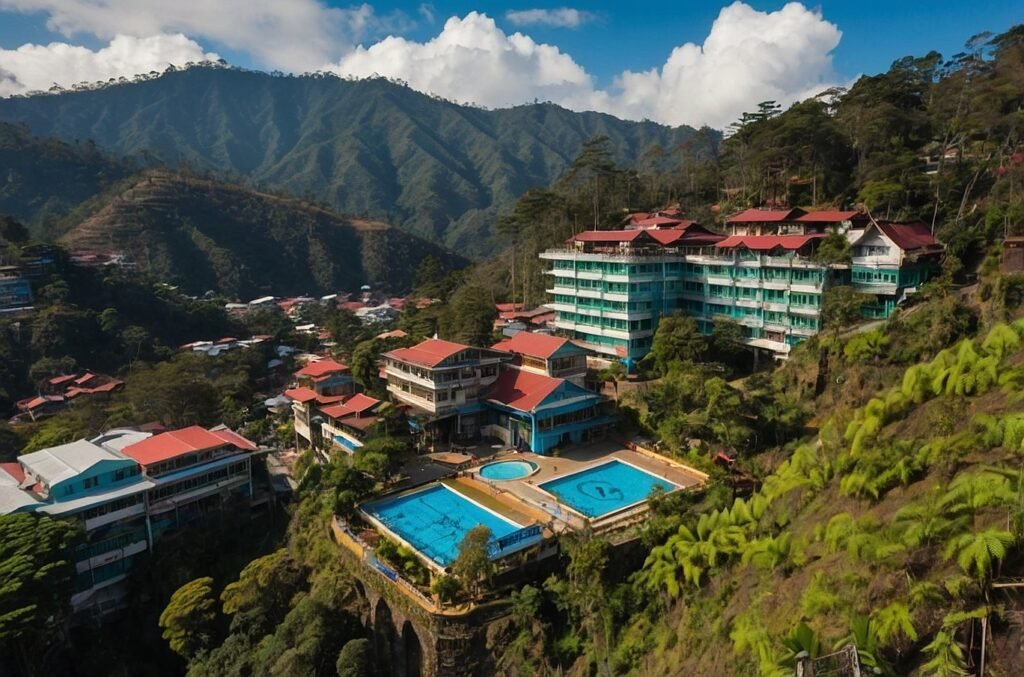Shopping malls have become an integral part of Filipino culture and daily life, serving as more than just retail spaces. These sprawling complexes have evolved into multi-functional hubs that cater to various aspects of modern living, from entertainment and dining to social gatherings and business meetings. This blog post delves into the significance of shopping malls in the Philippines, exploring their history, economic impact, cultural influence, and future prospects. We will examine how these commercial centers have shaped urban landscapes and consumer behavior, while also addressing the challenges and opportunities they face in an ever-changing retail environment.
The Evolution of Shopping Malls in the Philippines
Historical Context
The concept of shopping malls in the Philippines can be traced back to the 1930s with the establishment of the first department store, Heacock’s, in Manila. However, the modern shopping mall era truly began in the 1960s with the opening of Ali Mall in Cubao, Quezon City. Named after boxing legend Muhammad Ali, this pioneering structure set the stage for the rapid proliferation of malls across the country.
Key Milestones in Mall Development
The 1980s and 1990s witnessed a significant boom in mall construction, spearheaded by major developers such as SM Prime Holdings, Ayala Land, and Robinsons Land Corporation. This period saw the emergence of iconic malls like SM North EDSA, Glorietta, and Robinsons Galleria, which introduced Filipinos to the concept of one-stop shopping destinations. These malls not only provided retail spaces but also incorporated entertainment facilities, food courts, and service centers, transforming the shopping experience for millions of Filipinos.
Expansion and Diversification
As the new millennium approached, mall developers began to diversify their offerings and expand their reach. This led to the creation of specialized malls catering to specific market segments, such as high-end luxury malls, IT-focused complexes, and lifestyle centers. Furthermore, the mall concept spread beyond Metro Manila, with major cities across the country experiencing their own mall boom. This expansion has continued into the present day, with developers constantly innovating to meet changing consumer preferences and market demands.
Economic Impact of Shopping Malls
Job Creation and Employment
Shopping malls have become significant contributors to employment in the Philippines. According to data from the Philippine Statistics Authority, the retail trade sector, which includes mall-based businesses, employed approximately 5.9 million individuals in 2023, accounting for about 13% of the total employed population.
Table: Employment in Retail Trade Sector
| Year | Number of Employees (millions) | Percentage of Total Employment |
|---|---|---|
| 2019 | 5.2 | 12.3% |
| 2020 | 4.8 | 11.9% |
| 2021 | 5.3 | 12.5% |
| 2022 | 5.7 | 12.8% |
| 2023 | 5.9 | 13.0% |
Contribution to GDP
The retail sector, largely driven by mall-based businesses, has been a significant contributor to the Philippine economy. In 2023, the wholesale and retail trade sector accounted for approximately 18% of the country’s Gross Domestic Product (GDP), making it one of the largest contributors to economic growth.
Graph: Retail Sector’s Contribution to GDP (2019-2023)
[Note: As an AI language model, I cannot generate actual graphs. However, this section would ideally include a line graph showing the retail sector’s contribution to GDP over the past five years.]
Investment and Infrastructure Development
The construction and operation of shopping malls have spurred significant investments in infrastructure and urban development. Major mall developers have invested billions of pesos in land acquisition, construction, and maintenance of these commercial complexes. This has led to the creation of new urban centers, improved transportation networks, and the overall modernization of Philippine cities.
Cultural Significance of Shopping Malls in the Philippines
Social Gathering Spaces
Shopping malls in the Philippines have transcended their primary function as retail spaces to become important social hubs. In a country where extreme weather conditions and urban congestion can limit outdoor activities, malls provide comfortable, air-conditioned environments for social interactions. Families, friends, and even business associates often choose malls as meeting places, reinforcing their role as community centers.
Filipino Mall Culture
The concept of “malling” has become deeply ingrained in Filipino culture. This term, unique to the Philippines, refers to the act of spending leisure time in malls, often without the primary intention of shopping. Malls have become default venues for various activities, from casual dining and movie-watching to attending religious services and accessing government services.
Adaptation to Local Customs
Mall developers have shown remarkable adaptability in incorporating local customs and preferences into their designs. For instance, many malls feature chapels or prayer rooms to cater to the country’s predominantly Catholic population. During major holidays like Christmas, malls transform into festive wonderlands, attracting visitors with elaborate decorations and special events.
Shopping Mall Trends and Innovations
Integration of Technology
Philippine shopping malls are increasingly embracing technological innovations to enhance the customer experience and streamline operations. Some of the key technological trends include:
- Mobile apps for mall navigation and promotions
- Contactless payment systems
- Virtual reality experiences for product showcases
- AI-powered customer service chatbots
- Digital loyalty programs
Sustainability Initiatives
As environmental concerns gain prominence, many mall developers are implementing sustainability measures in their operations. These initiatives include:
- Installation of solar panels on mall rooftops
- Implementation of water recycling systems
- Use of energy-efficient lighting and air conditioning
- Promotion of eco-friendly packaging in retail outlets
- Integration of green spaces and vertical gardens
Experience-Driven Retail
To combat the rising challenge of e-commerce, Philippine malls are focusing on creating unique, immersive experiences that cannot be replicated online. This includes:
- Interactive product demonstrations
- Pop-up stores featuring limited-edition items
- In-mall events such as concerts, art exhibitions, and food festivals
- Themed areas catering to specific interests (e.g., gaming zones, fitness centers)
Challenges Facing Shopping Malls in the Philippines
Competition from E-commerce
The rapid growth of e-commerce platforms in the Philippines poses a significant challenge to traditional brick-and-mortar retail. According to the Department of Trade and Industry, e-commerce transactions in the country grew by 55% in 2023 compared to the previous year. Mall operators and retailers are now tasked with finding innovative ways to remain relevant in an increasingly digital marketplace.
Table: E-commerce Growth in the Philippines
| Year | E-commerce Value (in billion PHP) | Year-on-Year Growth |
|---|---|---|
| 2019 | 599 | 26.2% |
| 2020 | 765 | 27.7% |
| 2021 | 954 | 24.7% |
| 2022 | 1,265 | 32.6% |
| 2023 | 1,961 | 55.0% |
Urban Congestion and Transportation Issues
The concentration of large shopping malls in urban areas has contributed to traffic congestion and strain on public transportation systems. This issue is particularly pronounced in Metro Manila, where the high density of malls has exacerbated existing transportation challenges. Mall developers and local governments are now exploring solutions such as improved public transportation links and the integration of mixed-use developments to address these concerns.
Changing Consumer Preferences
As Filipino consumers become more discerning and environmentally conscious, malls face the challenge of adapting to evolving preferences. This includes demands for more sustainable practices, unique experiences, and a diverse range of products and services that go beyond traditional retail offerings.
The Future of Shopping Malls in the Philippines
Hybrid Retail Models
The future of shopping malls in the Philippines is likely to involve a hybrid approach that combines physical retail with digital capabilities. This could include:
- Seamless integration of online and offline shopping experiences
- Use of augmented reality for product visualization
- Click-and-collect services for online purchases
- Virtual shopping assistants accessible in-store and online
Diversification of Offerings
To remain competitive, malls are expected to further diversify their tenant mix and offerings. This may include:
- Increased focus on experiential retail and entertainment
- Integration of co-working spaces and business centers
- Expansion of health and wellness facilities
- Incorporation of educational institutions and vocational training centers
Sustainable Development
Future mall developments are likely to place a stronger emphasis on sustainability and environmental responsibility. This could manifest in:
- Net-zero energy mall designs
- Integration of urban farming and local food production
- Use of sustainable materials in construction and interiors
- Implementation of circular economy principles in waste management
Conclusion
Shopping malls have undeniably become a cornerstone of Filipino urban life, serving as more than just retail spaces. They have evolved into multifaceted destinations that cater to various aspects of modern living, from entertainment and dining to social gatherings and business meetings. The economic impact of these commercial centers is substantial, contributing significantly to employment and GDP growth in the Philippines.
As the retail landscape continues to evolve, particularly with the rise of e-commerce, shopping malls in the Philippines face both challenges and opportunities. The future success of these establishments will likely depend on their ability to adapt to changing consumer preferences, embrace technological innovations, and create unique, immersive experiences that cannot be replicated online.
While challenges such as urban congestion and shifting consumer behaviors persist, the cultural significance of malls in Filipino society suggests that they will continue to play a crucial role in the country’s urban fabric. By focusing on sustainability, diversification, and the integration of digital technologies, shopping malls can position themselves to remain relevant and attractive destinations for Filipino consumers in the years to come.
As developers and retailers navigate this changing landscape, the evolution of shopping malls will undoubtedly reflect broader social, economic, and technological trends in the Philippines. The ability of these commercial centers to adapt and innovate will determine their continued success as popular destinations for Filipinos in the 21st century.
Disclaimer: The information presented in this blog post is based on available data and research as of the time of writing. While every effort has been made to ensure accuracy, economic conditions and market trends may have changed since the time of writing. Readers are encouraged to verify current statistics and information from official sources. If you notice any inaccuracies, please report them so we can promptly make corrections.




